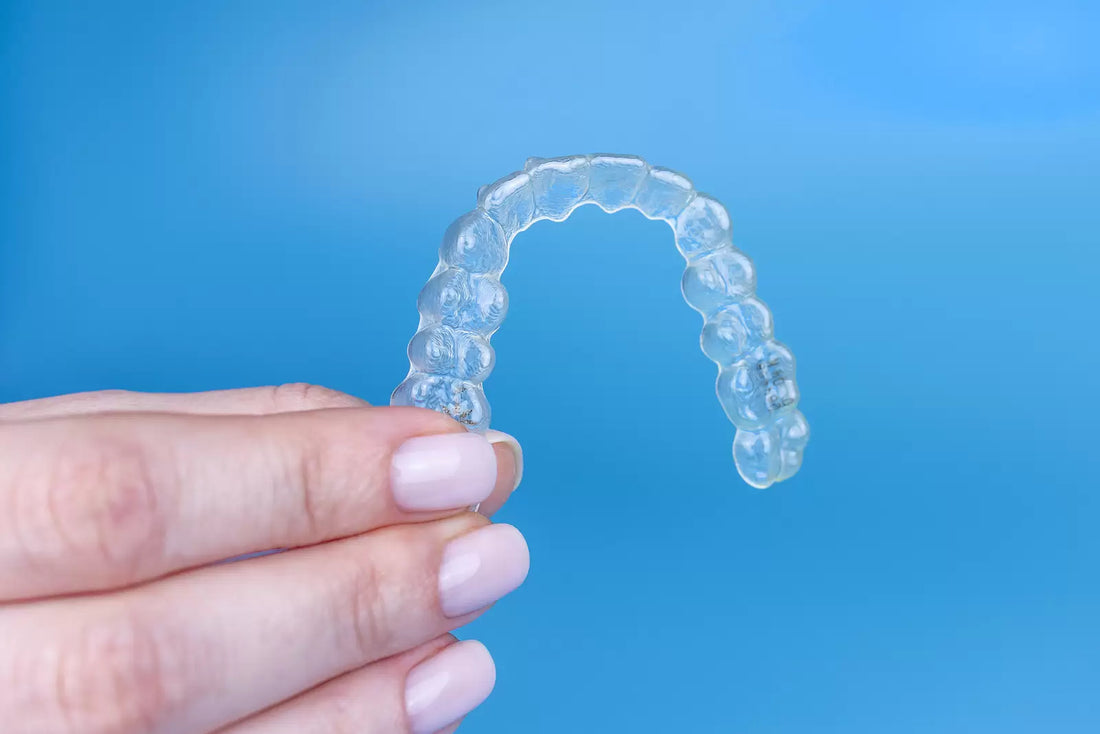Aligning Smiles: The Pros and Cons of Ultrasonic Cleaning for Invisalign®
In the realm of orthodontics, Invisalign® has emerged as a popular choice for individuals seeking a discreet and convenient solution to achieve a straighter smile. This innovative clear aligner system relies on a series of customized, removable trays to gradually shift teeth into their desired positions. As Invisalign® users embark on their journey to a straighter smile, proper care and maintenance of the aligners become crucial. One cleaning method that has gained attention is ultrasonic cleaning. In this article, we'll explore the pros and cons of using ultrasonic cleaning for Invisalign®, shedding light on whether this advanced cleaning technique is the right fit for maintaining those clear aligners.
Understanding Invisalign® Maintenance
Before delving into the specifics of ultrasonic cleaning, it's essential to grasp the fundamentals of Invisalign® maintenance. Clear aligners demand a high level of cleanliness to prevent the buildup of bacteria, plaque, and odors. Proper hygiene not only ensures oral health but also prolongs the life of the aligners and contributes to a more comfortable wearing experience.
Typically, Invisalign® wearers are advised to clean their aligners regularly. The recommended routine includes gentle brushing with a soft toothbrush and mild, clear, anti-bacterial soap. Rinsing the aligners under lukewarm water is also suggested to remove any residual soap. While this traditional cleaning method is effective, the advent of ultrasonic cleaning technology has presented an alternative that promises a deeper and more efficient cleaning process.
The Pros of Ultrasonic Cleaning
1. Precision Cleaning:
One of the primary advantages of ultrasonic cleaning is its ability to reach intricate areas that may be challenging to clean manually. Invisalign® aligners have numerous nooks and crannies that can harbor bacteria and debris. Ultrasonic cleaners utilize high-frequency sound waves to create microscopic bubbles, which collapse upon contact with the aligners. This phenomenon, known as cavitation, generates powerful yet gentle scrubbing action, ensuring a thorough cleaning even in hard-to-reach spots.2. Time Efficiency:
Ultrasonic cleaning is renowned for its efficiency, providing a quick and hassle-free solution for cleaning Invisalign® aligners. The process typically takes a few minutes, saving users valuable time compared to manual cleaning methods. This time efficiency can be particularly appealing to individuals with busy schedules who seek an effective yet swift way to maintain their clear aligners.3. Non-Abrasive Nature:
Invisalign® aligners are made from a specialized plastic material that is susceptible to scratches and damage if cleaned improperly. Ultrasonic cleaning, being a non-abrasive method, ensures that the aligners remain free from scratches and maintain their transparency throughout the treatment. This is a notable advantage over some other cleaning methods that may inadvertently cause cosmetic damage to the aligners.
4. Deeper Cleaning:
Ultrasonic cleaning doesn't just address the surface of the aligners; it penetrates deeper, removing accumulated bacteria and biofilm. This deep cleaning is crucial for maintaining optimal oral hygiene during Invisalign® treatment, as it helps prevent issues such as bad breath and potential enamel damage due to prolonged exposure to harmful substances.
The Cons of Ultrasonic Cleaning
1. Cost Considerations:
While ultrasonic cleaners offer several benefits, they also come with a cost. Investing in a high-quality ultrasonic cleaning device can be more expensive than traditional cleaning tools such as a soft toothbrush and soap. For some Invisalign® users, the initial expense may be a deterrent, especially if they are already satisfied with their current cleaning routine.
2. Maintenance of the Ultrasonic Cleaner:
Owning an ultrasonic cleaner requires responsible maintenance to ensure its longevity and effectiveness. The device needs to be regularly cleaned and descaled to prevent mineral buildup, which can compromise its performance. Additionally, users must follow the manufacturer's guidelines for proper usage and maintenance, adding an extra layer of responsibility to the Invisalign® care routine.
3. Noise Level:
Ultrasonic cleaners can be noisy during operation, emitting a high-frequency sound that may be bothersome to some users. While this is a temporary inconvenience, it's worth considering, especially for those who are sensitive to noise or share living spaces where discretion is essential.
4. Limited Effect on Stains:
While ultrasonic cleaning excels at removing bacteria and debris, it may have limitations when it comes to addressing stains on the Invisalign® aligners. Stains caused by certain foods or beverages may require additional steps, such as soaking the aligners in a specialized cleaning solution, to achieve optimal results. Users should be aware that ultrasonic cleaning might not be a one-size-fits-all solution for all types of discoloration.
Tips for Effective Ultrasonic Cleaning
For Invisalign® users considering the adoption of ultrasonic cleaning, it's important to follow some best practices to maximize its effectiveness:
1. Regular Cleaning Schedule:
Consistency is key when it comes to maintaining clear aligners. Establishing a regular cleaning schedule, whether using an ultrasonic cleaner or traditional methods, helps prevent the buildup of bacteria and ensures a hygienic oral environment throughout the Invisalign® treatment.
2. Use Compatible Cleaning Solutions:
Some ultrasonic cleaners work best with specific cleaning solutions. It's essential to choose a solution that is safe for both the aligners and the ultrasonic cleaner. Consult with the Invisalign® provider or the cleaner's manufacturer for recommendations on compatible cleaning solutions.
3. Handle Aligners with Care:
Although ultrasonic cleaning is non-abrasive, it's crucial to handle Invisalign® aligners with care. Avoid dropping them into the cleaner from a height, as this could cause unnecessary stress on the delicate plastic material.
4. Combine Methods for Optimal Results:
In certain situations, combining ultrasonic cleaning with other cleaning methods may yield the best results. For example, using an ultrasonic cleaner for regular maintenance and a specialized cleaning solution for stain removal can provide a comprehensive approach to Invisalign® care.
Conclusion
Ultrasonic cleaning presents a promising option for Invisalign® users seeking an efficient and thorough method for maintaining their clear aligners. The precision, time efficiency, and non-abrasive nature of this technology contribute to its appeal. However, potential downsides such as cost considerations, maintenance requirements, noise levels, and limitations in addressing certain stains should be carefully weighed.
Ultimately, the choice between ultrasonic cleaning and traditional methods depends on individual preferences, lifestyle, and budget. Invisalign® wearers are encouraged to consult with their orthodontists or dentists to determine the most suitable cleaning approach for their specific needs. By aligning smiles with both proper orthodontic treatment and effective maintenance practices, individuals can embark on their journey to a straighter, healthier, and more confident smile.

